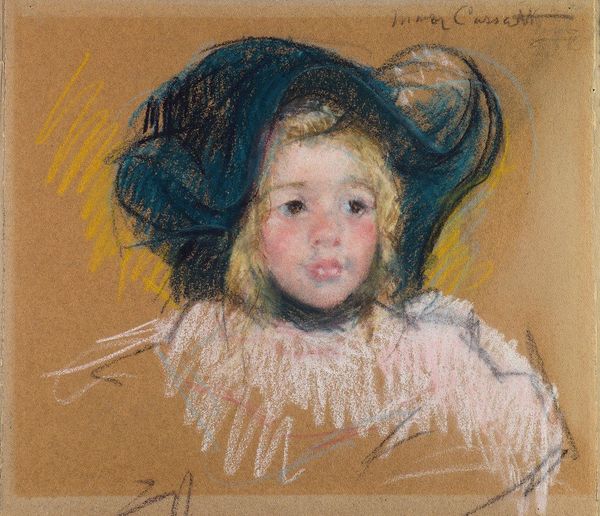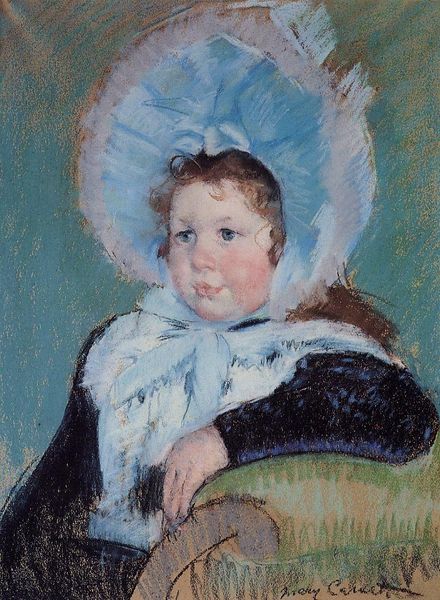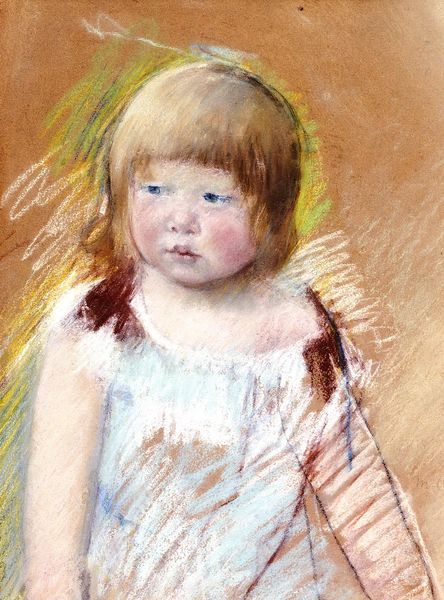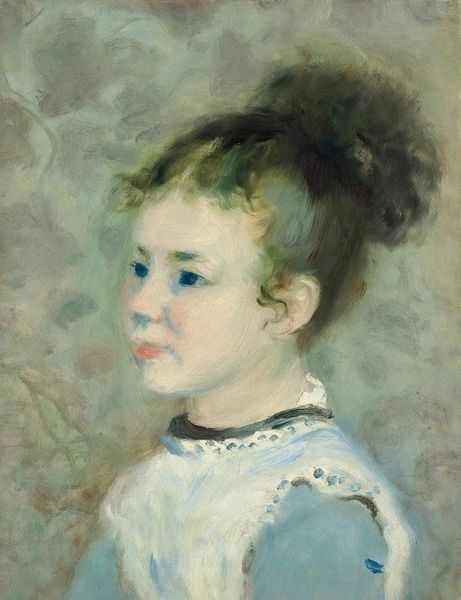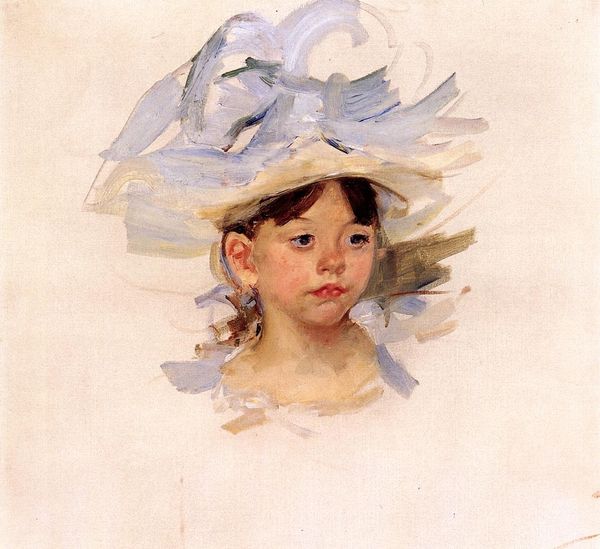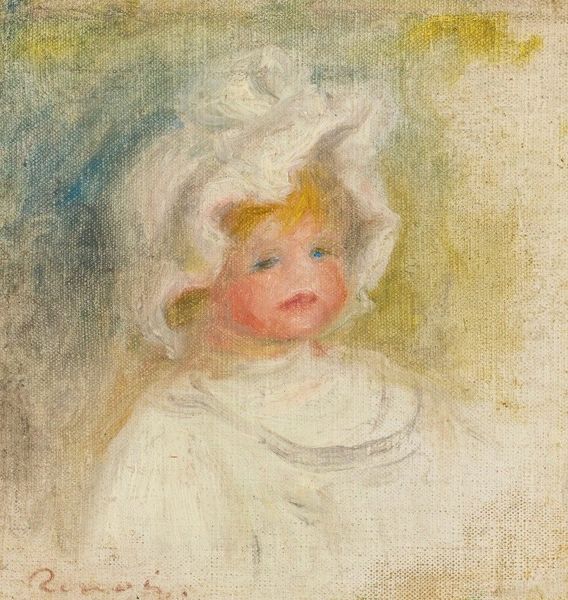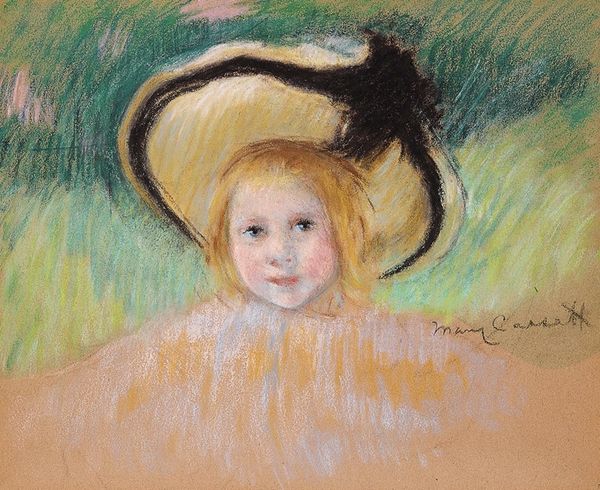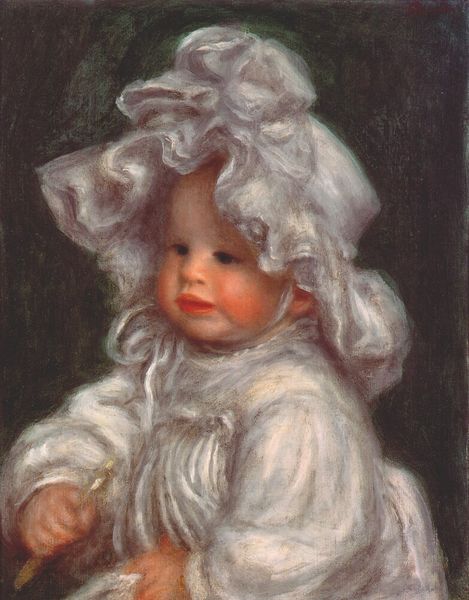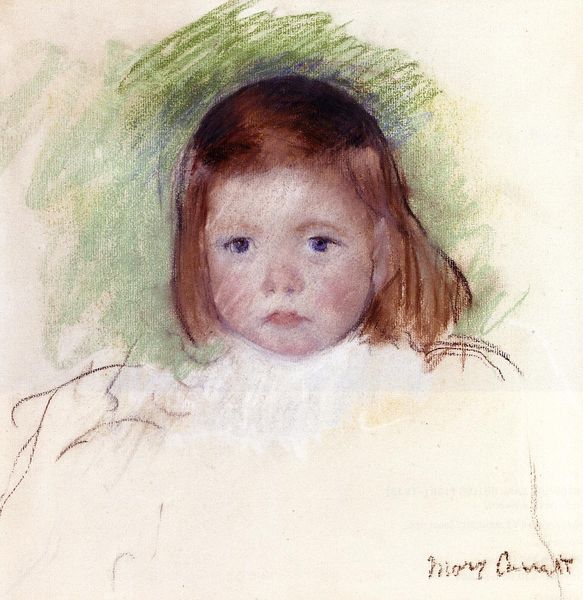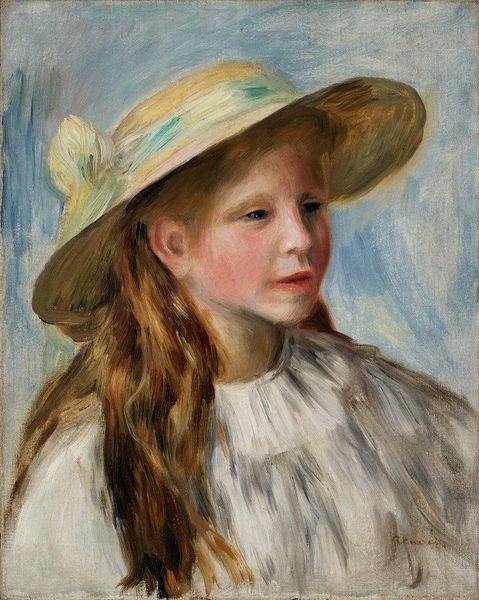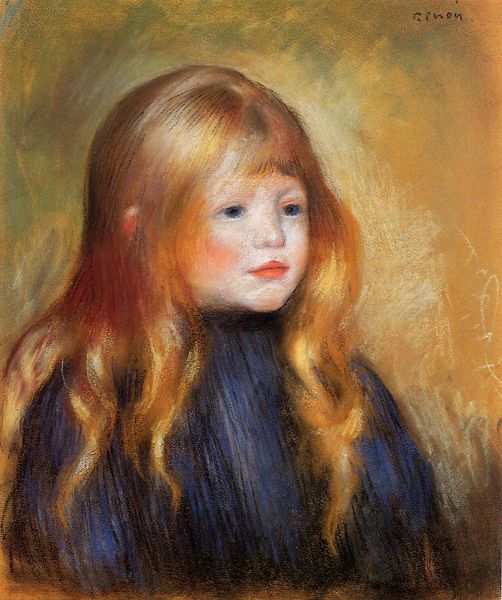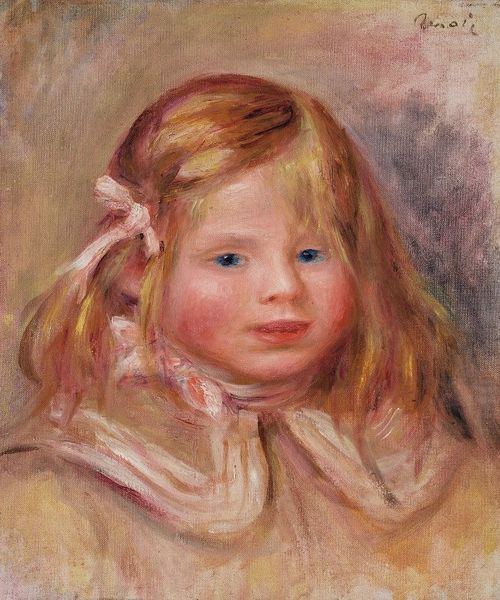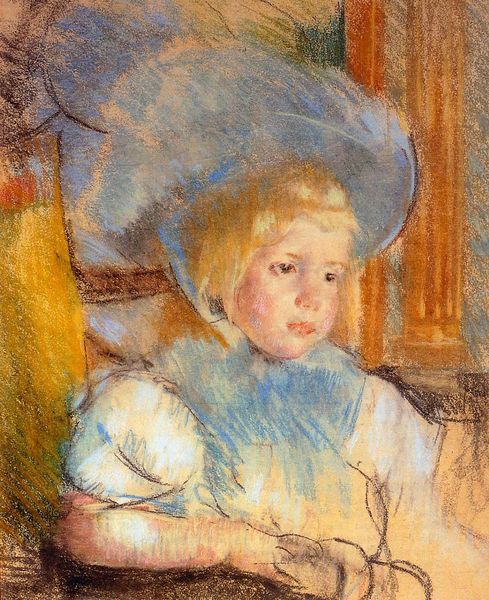
Dimensions: 46.99 x 43.18 cm
Copyright: Public domain
Curator: We’re looking at Mary Cassatt's “Head of Simone in a Large Plumes Hat, Looking Left,” created in 1903. It’s a pastel work currently in a private collection. Editor: It strikes me as immediately intimate, capturing a moment of childhood introspection. The cool blues and greens give it a calming, almost melancholic, air. Curator: Intimate, yes, and what interests me is Cassatt's handling of pastel, a medium that lends itself so well to depicting the textures of clothing and skin. Look at how she builds up the hat, layering strokes to create a sense of depth and volume, especially given it’s plumes! Editor: Absolutely. And the choice of pastel softens the sitter’s features, lending them an air of innocence, which is often tied to Victorian notions of childhood and gender. You know, it reminds me how the image of girls specifically has historically been weaponized to suggest women's submissive, even fragile, positions. It begs the question, where do portraits such as this leave us now in the 21st century? Curator: An important perspective. But I also see Cassatt pushing back on traditional academic painting. By focusing on scenes of domestic life and intimate moments, she elevated the everyday experiences of women and children. Plus, she made a deliberate choice in a less precious and traditionally "feminine" medium. She wasn't rendering a classical subject in oil; instead, this softness that she gained through pastel work brought the piece closer to real-world intimacy and closer to commercial techniques as photography was exploding onto the scene. Editor: I can agree with this subversion on some level. Cassatt’s inclusion in Impressionist circles afforded her certain levels of institutional support while other women were pushed out and to the side. Although she's presenting intimate scenes of women, it still feels as though these scenes are catered towards a specific, and mostly, privileged audience, therefore solidifying, not pushing against, traditional boundaries. Curator: Perhaps. Though by focusing on the textures of the hat and garment, you can really see the artist at work, and recognize the artist as laborer. It highlights the materiality and physicality of the artistic process, a vital aspect often overlooked. Editor: Indeed, by viewing these portraits as both intimate snapshots of daily life and products of a meticulous method we can perhaps renegotiate some of the complicated gendered readings of 19th-century life. Curator: It’s definitely given me a fresh appreciation for the subtle radicalism in Cassatt’s choice of medium. Editor: And me, insight into how artworks can uphold AND defy entrenched ideologies of class and gender, all in one brushstroke.
Comments
No comments
Be the first to comment and join the conversation on the ultimate creative platform.
